
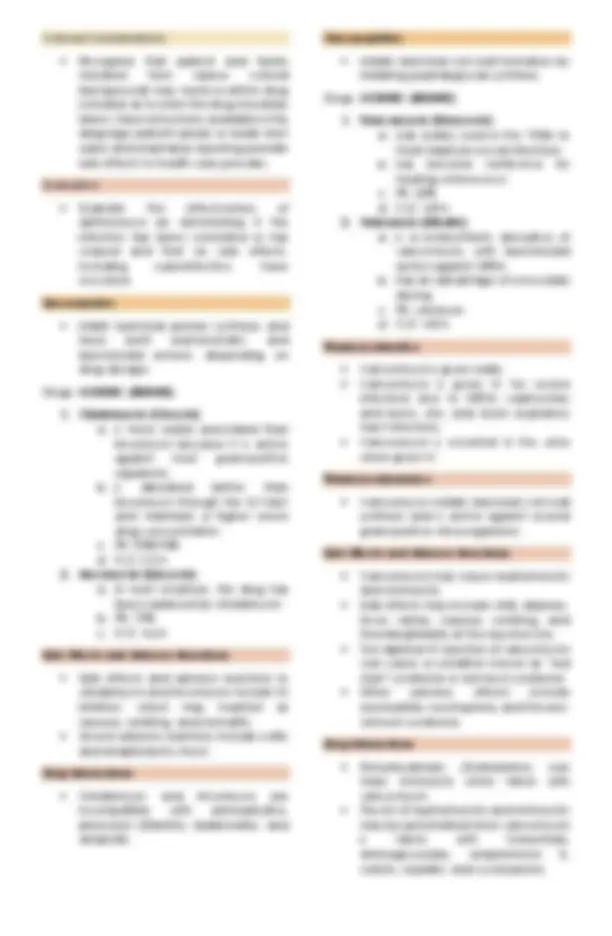
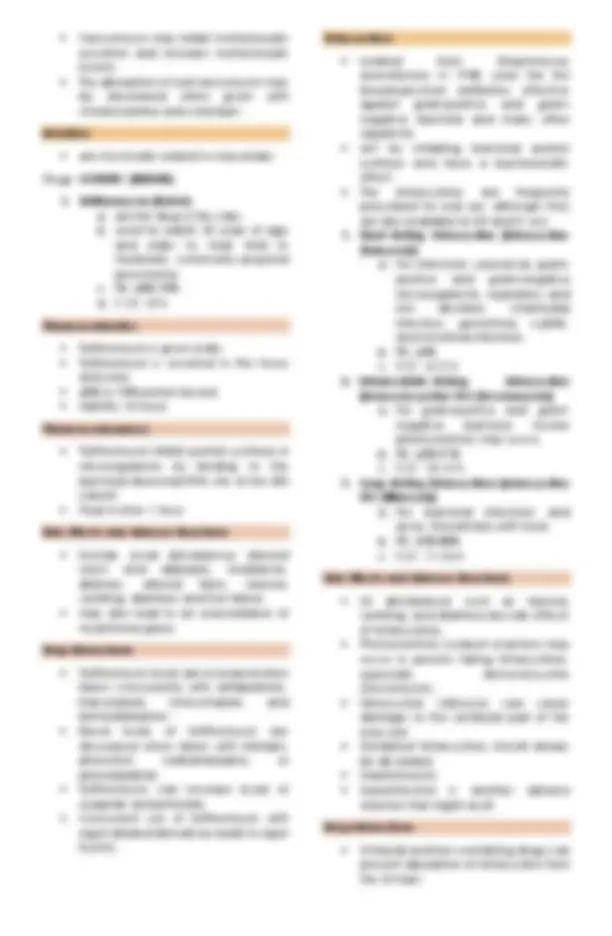
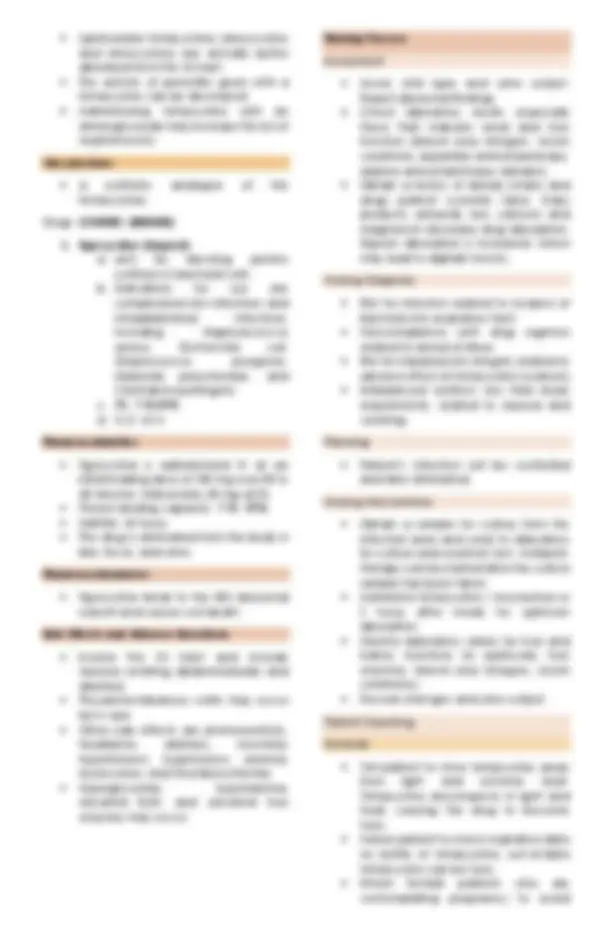
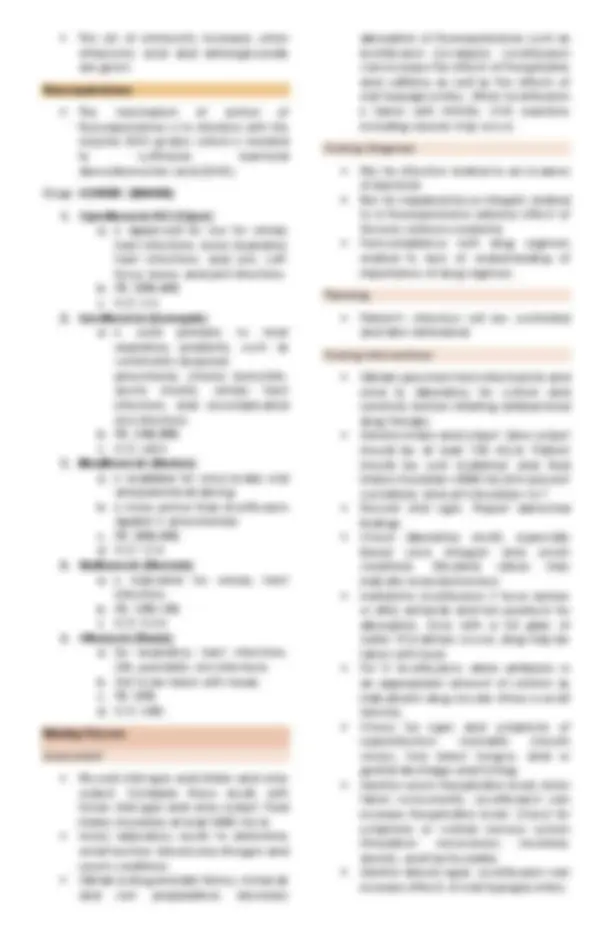
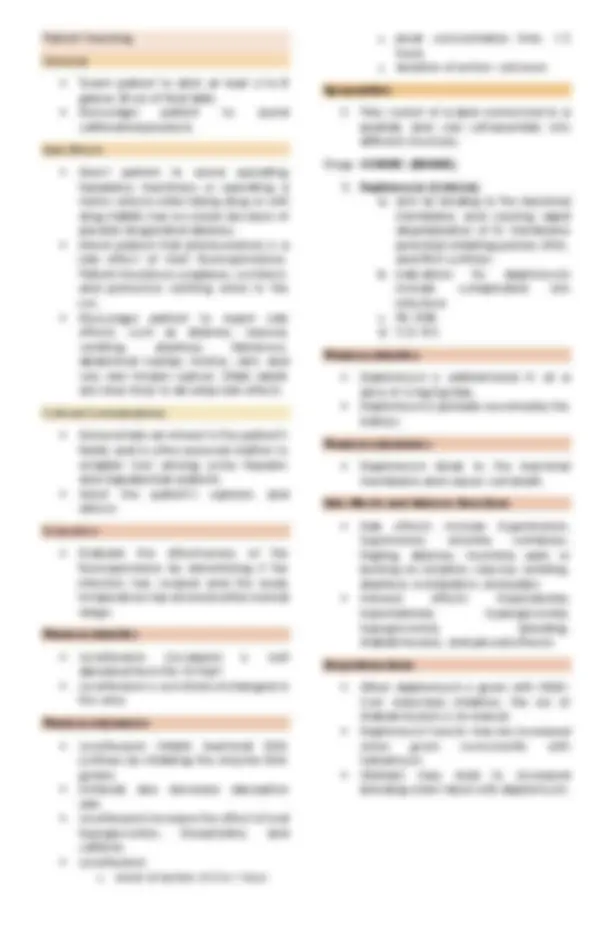
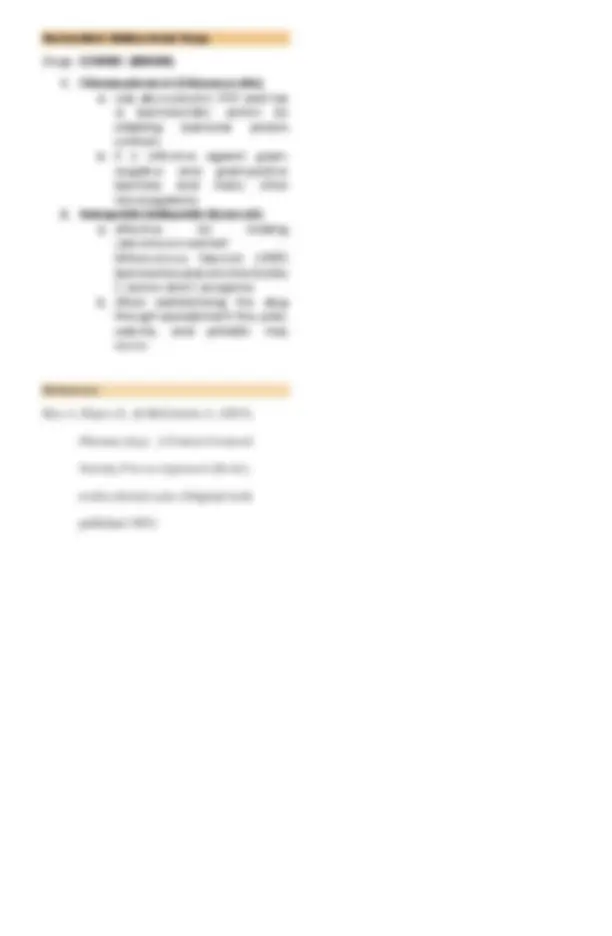


Study with the several resources on Docsity

Earn points by helping other students or get them with a premium plan


Prepare for your exams
Study with the several resources on Docsity

Earn points to download
Earn points by helping other students or get them with a premium plan
Community
Ask the community for help and clear up your study doubts
Discover the best universities in your country according to Docsity users
Free resources
Download our free guides on studying techniques, anxiety management strategies, and thesis advice from Docsity tutors
An in-depth analysis of various antibacterial drugs, including their definitions, mechanisms of action, uses, side effects, and nursing considerations. It covers drugs such as azithromycin, clarithromycin, clindamycin, lincomycin, telavancin, telithromycin, tetracyclines, tigecycline, gentamicin sulfate, streptomycin sulfate, ciprofloxacin hcl, levofloxacin, norfloxacin, ofloxacin, and daptomycin. The document also includes information on drug interactions, cultural considerations, and nursing process assessment, diagnosis, and teaching.
Typology: Study notes
1 / 10

This page cannot be seen from the preview
Don't miss anything!







Macrolides, Tetracyclines, Aminoglycosides, and Fluoroquinolones Topic Outline
should not be mixed together in the same container. Side Effects and Adverse Reactions
Unclassified Antibacterial Drugs Drugs: GENERIC (BRAND)
1. Chloramphenicol (Chloromycetin) a. was discovered in 1947 and has a bacteriostatic action by inhibiting bacterial protein synthesis. b. It is effective against gram- negative and gram-positive bacteria and many other microorganisms. 2. Quinupristin/dalfopristin (Synercid) a. effective for treating vancomycin-resistant Enterococcus faecium (VREF) bacteremia and skin infected by S. aureus and S. pyogenes. b. When administering the drug through a peripheral IV line, pain, edema, and phlebitis may occur. Reference: